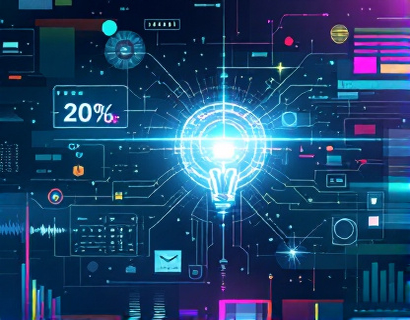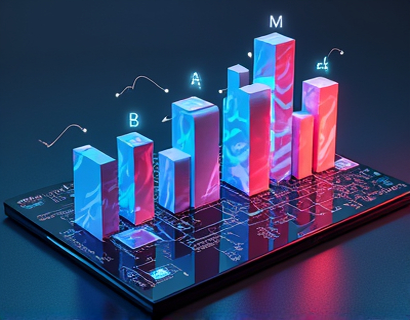Next-Gen Digital Transformation: Harnessing Crypto and AI for Enhanced User Experiences
The digital landscape is undergoing a profound transformation, driven by the convergence of cryptocurrency and artificial intelligence. This synergy is not just a technological curiosity but a powerful force reshaping how we interact with digital services and platforms. As we embark on this journey, it's essential to understand the foundational technologies and their applications, as well as the broader implications for users and businesses alike.
The integration of cryptocurrency into digital ecosystems brings a new level of security, transparency, and decentralization. Traditional centralized systems often rely on intermediaries to facilitate transactions, which can introduce vulnerabilities and inefficiencies. Cryptocurrency, with its blockchain technology, offers a decentralized alternative where transactions are recorded on a public ledger, ensuring immutability and trust without the need for a central authority.
Artificial intelligence, on the other hand, is revolutionizing the way data is processed and utilized. AI algorithms can analyze vast amounts of data to uncover patterns, make predictions, and automate complex tasks. When combined with the transparency and security of blockchain, AI can operate in a more trustworthy and efficient manner, enhancing user experiences across various domains.
Enhanced Security through Blockchain
One of the most significant advantages of integrating cryptocurrency into digital platforms is the enhanced security it provides. Blockchain technology ensures that once data is recorded, it cannot be altered without consensus from the network. This immutability is crucial in an era where data breaches and cyber attacks are increasingly common. For users, this means a higher level of trust in the systems they interact with, knowing that their data is secure and tamper-proof.
Moreover, the use of smart contracts on blockchain platforms automates and enforces agreements without the need for intermediaries. This not only reduces the risk of fraud but also streamlines processes, making them faster and more reliable. In the context of digital services, smart contracts can automate payments, access controls, and other critical functions, ensuring that all parties adhere to the agreed terms.
Personalized User Experiences with AI
AI's ability to process and analyze large datasets enables the creation of highly personalized user experiences. By understanding user preferences, behaviors, and patterns, AI can tailor content, recommendations, and interactions to individual needs. This level of personalization is particularly valuable in digital platforms where user engagement is key to success.
For instance, in e-commerce, AI-driven recommendation systems can suggest products based on a user's browsing and purchase history, increasing the likelihood of conversion. In content delivery, AI can curate news feeds, entertainment recommendations, and educational materials that resonate with each user, enhancing their overall experience.
Predictive Analytics and Decision Making
AI's predictive capabilities are another game-changer in the digital transformation landscape. By analyzing historical data and identifying trends, AI can forecast future behaviors and outcomes. This is invaluable for businesses looking to make data-driven decisions, optimize operations, and stay ahead of market shifts.
In the context of digital platforms, predictive analytics can help in proactive customer support, anticipating user needs before they arise. For example, AI can detect potential issues in a service and trigger preventive measures, ensuring a seamless user experience. Additionally, businesses can use these insights to refine their strategies, allocate resources more effectively, and innovate based on emerging trends.
Decentralized Identity Management
The intersection of cryptocurrency and AI also holds promise for decentralized identity management. Traditional identity systems are often centralized, making them susceptible to breaches and misuse. Blockchain-based identity solutions, enhanced by AI, offer a more secure and user-controlled approach.
Users can create and manage their digital identities, granting or revoking access to services as needed. AI can play a role in verifying identities through biometric data and behavioral analysis, adding an extra layer of security. This not only empowers users with greater control over their personal information but also reduces the burden on centralized authorities to manage and protect identities.
Fractional Ownership and Tokenization
Tokenization, powered by blockchain, allows for the fractional ownership of assets, making high-value assets accessible to a broader audience. This is particularly relevant in industries such as real estate, art, and luxury goods, where ownership has traditionally been limited to a select few. By representing assets as tokens on a blockchain, these items can be divided into smaller, tradable units.
AI can enhance this process by providing valuation insights, market analysis, and investment recommendations. Users can make informed decisions based on data-driven insights, while the decentralized nature of blockchain ensures transparency and fairness in transactions. This democratization of ownership not only opens up new investment opportunities but also fosters a more inclusive economic ecosystem.
Automated and Efficient Processes
The combination of cryptocurrency and AI can significantly streamline business processes, reducing costs and increasing efficiency. Automated workflows powered by AI can handle routine tasks, from data entry to customer support, freeing up human resources for more strategic activities. Blockchain ensures that these processes are secure, transparent, and auditable, building trust among all stakeholders.
For example, in supply chain management, AI can optimize logistics and inventory management, while blockchain provides a tamper-proof record of transactions. This dual approach ensures that products move smoothly from production to consumption, with every step verified and recorded. Such efficiency gains are crucial for businesses aiming to stay competitive in a rapidly evolving market.
Challenges and Considerations
While the potential benefits are substantial, the integration of cryptocurrency and AI also presents challenges that must be addressed. Regulatory uncertainties remain a significant hurdle, as governments worldwide grapple with how to govern these emerging technologies. Compliance with existing laws and the development of new regulations will be essential to ensure that the benefits of these technologies are realized without compromising user rights and security.
Another consideration is the technical complexity involved in implementing blockchain and AI solutions. Organizations need to invest in skilled personnel and infrastructure to harness these technologies effectively. Additionally, there is a need for education and awareness among users to fully leverage the advantages of decentralized and AI-driven digital platforms.
Future Prospects
Looking ahead, the synergy between cryptocurrency and AI is poised to drive further innovation and transformation. As these technologies mature, we can expect more seamless integrations and novel applications across various sectors. The potential for decentralized finance (DeFi), enhanced virtual and augmented reality experiences, and intelligent IoT devices is vast.
Moreover, the environmental impact of blockchain, particularly proof-of-work systems, is an area that requires attention. The development of more sustainable consensus mechanisms will be crucial for the long-term viability of blockchain-based solutions. AI can play a role here by optimizing energy usage and identifying more efficient algorithms.
In conclusion, the convergence of cryptocurrency and AI represents a powerful force in the digital transformation journey. By enhancing security, personalizing user experiences, enabling predictive analytics, and streamlining processes, these technologies are reshaping the way we interact with digital services. As we continue to explore and innovate at this intersection, the future of digital engagement looks brighter and more interconnected than ever.










































